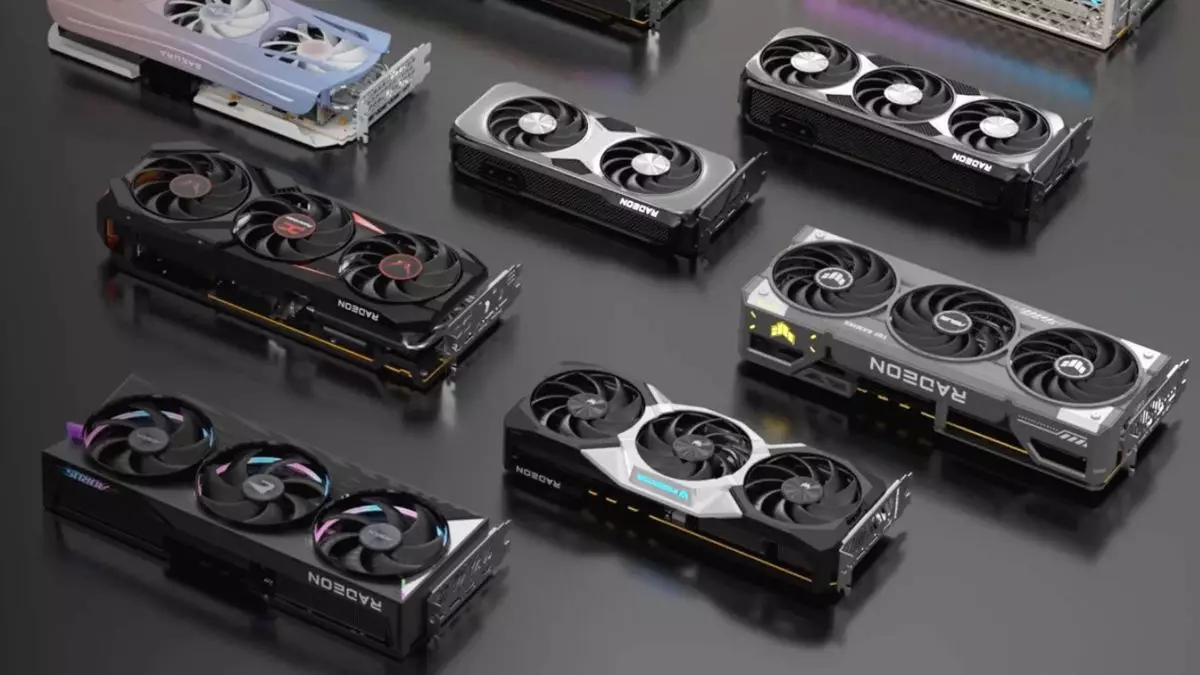The landscape of the GPU market has morphed into a frenzied arena where graphics cards are vanishing almost as quickly as they hit store shelves. Consumers have become all too familiar with the distressing cycle of scarcity and hype surrounding new releases, including Nvidia’s RTX 50-series. This prevailing atmosphere of limited availability doesn’t just frustrate gamers; it also outlines the challenges AMD faces as they gear up for the introduction of their new RDNA 4 GPUs. With such a tumultuous environment, it’s imperative for AMD to listen closely to consumer sentiments and address their pressing concerns: availability, pricing, and feature set, particularly in relation to AI upscaling technology.
When AMD sought opinions about the upcoming RDNA 4 GPUs on social media, the immediate concern echoed throughout the responses: availability must be a priority. It’s evident that consumers are weary of the lack of stock and are demanding a return to a more stable and predictable market. One user succinctly encapsulated the collective frustration by expressing that “availability would be a brilliant start.” This underscores a broader sentiment of disillusionment among gamers who have faced months of navigating an unpredictable marketplace. As companies like AMD prepare to launch new products, the expectation is not just for flashy specs, but for assurance that consumers will be able to purchase these GPUs without needing to resort to luck or extensive tracking.
In addition to availability, pricing emerges as a critical talking point. As consumers invest substantial amounts into gaming setups, many have voiced their apprehension regarding steep price tags. For instance, one gamer remarked, “Don’t want to pay more for my GPU than I paid for my entire high-end gaming rig a year ago.” This statement starkly illustrates the financial strain gamers are experiencing and underscores the need for AMD to be prudent in its pricing strategy. Historically, entering the market with high prices has led to poor sales and negative public perception. Hence, an aggressive pricing strategy will be pivotal for the upcoming Radeon RX 9070 and 9070 XT. What consumers want is not just a product that meets their performance criteria; they want a product that provides substantial value for their investment.
Upscaling technologies, particularly AMD’s FSR (FidelityFX Super Resolution), is another focal point for consumer excitement. AMD’s upcoming FSR 4 seeks to rival Nvidia’s more established DLSS (Deep Learning Super Sampling) system. As AMD attempts to carve out its niche in AI-driven performance boosts, there is an implicit pressure to ensure their technology can not only match their competitors but offer tangible benefits to users. However, the timing of these advancements is critical. Nvidia has recently upgraded its upscaling technology, pushing the envelope further with its transition to transformer models. This creates a race against time for AMD, which often seems to be in a reactive position in the fast-evolving world of GPU technology.
The Growing Complexity of Frame Generation
Moreover, the conversation surrounding technologies such as Multi Frame Generation (MFG) from Nvidia adds another layer of complexity to this landscape. While some gamers express skepticism about MFG’s effectiveness, others are uncertain whether AMD should even strive to create a competing technology. The debate highlights a broader discussion on the quality of gameplay experience, as gamers increasingly prioritize “real” versus “fake” frames. As absurd as it may sound, this distinction is critical for authenticity in gaming; players want a pure experience that doesn’t feel artificially inflated by upsampling technologies.
Looking forward, the RDNA 4 release presents AMD with a crucial opportunity to demonstrate its capabilities and restore consumer confidence. By prioritizing availability, maintaining competitive pricing, and providing advancements in AI upscaling that meet or exceed current market offerings, AMD can secure a solid foothold amidst ongoing competition. As it stands, the gaming community awaits these new GPUs with bated breath, hopeful that the upcoming releases will not only meet expectations but also foster a more accessible and engaging graphics landscape going forward. The clock is ticking, and AMD must act decisively to ensure they emerge not just as participants in this vibrant marketplace, but as leaders ready to redefine the GPU experience for gamers.

